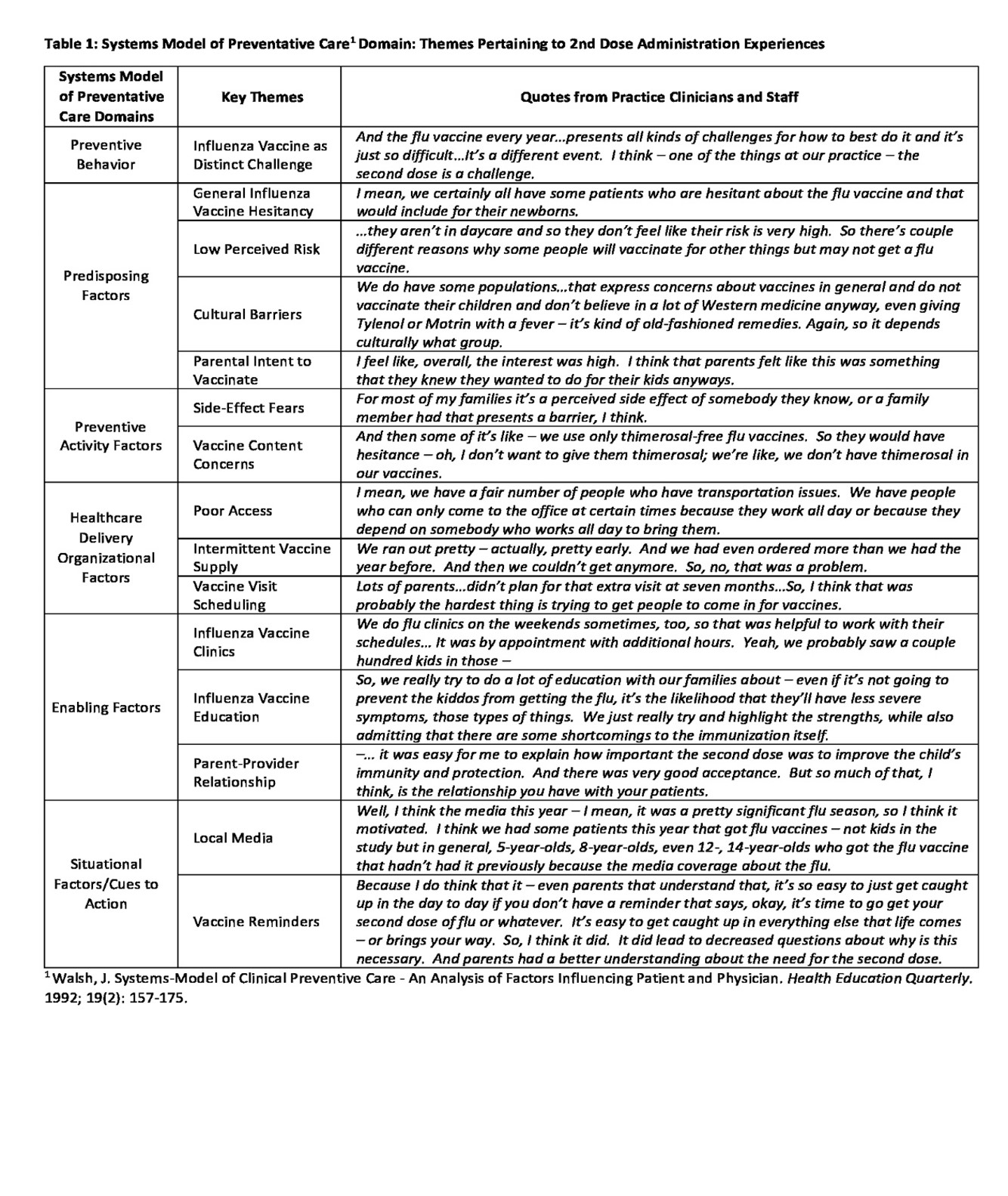Wynn C, Stockwell M, Nekrasova E, Torres A, Griffith M, Shone L, Localio R, Shults J, Unger R, Ware L, and Fiks A
Presented at the 2021 Pediatric Academic Societies Annual Meeting
Background: Less than half of children needing 2 doses of influenza vaccine in a season receive both, leaving them at increased risk of disease. Little is known about barriers and facilitators to increasing full influenza vaccination coverage.
Objective: To explore experiences of pediatric clinicians and staff in administering the 2nd influenza vaccine dose.
Design/Methods: We conducted 7 focus groups and 4 individual interviews with PROS practices that participated in the 2nd season (2018-19) of the NIH-funded Flu2Text RCT of text message reminders for 2nd influenza vaccine dose. Of 37 participating practices, 10 were selected for focus groups/individual interviews through stratified sampling of practices with the highest (n=5) and lowest (n=5) effect sizes in the RCT. Semi-structured discussion guides with clinicians (16 pediatricians, 9 nurse practitioners), nurses (n=3), medical assistants (n=5), and staff (n=5) included questions that addressed parental, practice and health system barriers/facilitators to 2nd dose administration. Using the Systems Model of Clinical Preventive Care as a conceptual framework, which focuses on factors involved in the provision and receipt of clinical preventive care, 2 investigators independently coded transcripts (K=.86, high agreement) with NVivo 12 Plus. Coding inconsistencies were resolved by consensus.
Results: We identified themes aligning with the Systems Model of Preventive Care (Table 1). Influenza vaccine administration, especially the 2nd influenza dose, differed from other childhood vaccines. Perceived barriers included parents’ general vaccine hesitancy, uncertainty about 2nd dose necessity, and transportation issues. Practice/system level factors such as vaccine availability and difficulty scheduling the 2nd dose were also identified. Despite barriers, participants reported most parents accepted the 2nd dose and highlighted a number of factors that enabled vaccination, including influenza vaccine clinics, education on necessity of both doses, local media coverage, and their existing relationships with families. Themes did not differ by practice performance in the RCT or by 2nd dose completion.
Conclusions: Despite distinct challenges, pediatric practices incorporated strategies to encourage receipt of the 2nd dose for those who need it. Themes from this study provide a framework for understanding challenges and opportunities to bolster 2nd dose influenza vaccination uptake.

Last Updated
07/19/2021
Source
American Academy of Pediatrics